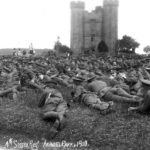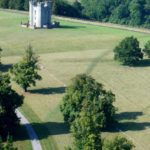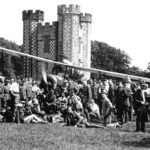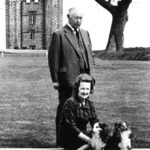- Home
arrow_drop_down
- What’s On
arrow_drop_down
- Where To Stay
arrow_drop_down
- Things To Do
arrow_drop_down
- Eat & Drink
arrow_drop_down
- Shopping
arrow_drop_down
- Plan Your Visit
arrow_drop_down
- Local Businesses
arrow_drop_down
- Business Support
arrow_drop_down
- Local Directory
arrow_drop_down
- Estate & Lettings Agents & Architects
- Health, Beauty & Wellbeing
- Home & Gardening Services
- Photographers, Fashion & Lifestyle
- Retirement, Care & Funeral Services
- Travel, Holidays & Languages
- Tradesman, Builders and Property Services
- Vehicle Repairs, Storage, Hire & Taxi Services
- Weddings, Events & Entertainment
- Business Support
Hiorne Tower – sheer folly, or is it?
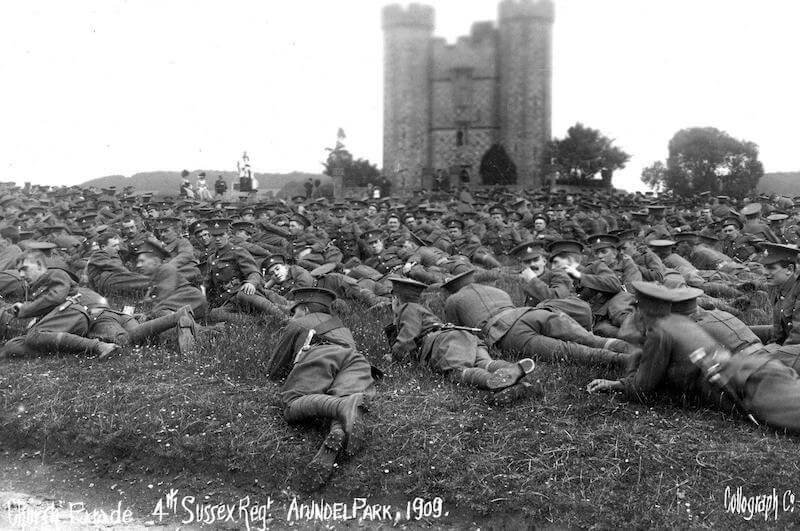
Originally published December 2017
One typical definition of the word ‘folly’ says, ‘A costly ornamental building with no practical purpose, especially a tower or mock-Gothic ruin built in a large garden or park.’
The connotations of silliness or madness in this definition is in line with the general meaning of the French word ‘folie’; however, another older meaning of this word is ‘delight’ or ‘favourite abode’.
Either way, I fail to see any evidence of madness while standing here on a high plateau in the grounds of the Duke of Norfolk’s park, admiring the perfect setting and unique architecture of the stunning Hiorne Tower. Okay, I cannot deny that on the face of it, it ticks all the above boxes, but I have always refused to refer to it as a folly. Indeed, I have been told by ‘a friend’ that I can get rather tetchy to those referring to it as thus.
I have never been able to gaze on this very purposeful structure in isolation. I see it through the inquisitive eyes of a local historian, the critical eyes of a landscape archaeologist and perhaps more importantly, through the eyes of one born in and grown up in the medieval town of Arundel.
As a child in the 1960s I was aware that even then, the tower had a most important function. A function that everyone growing up in the town was made very aware of at a young age. When the red flag was flying on the tower one must never walk too far down and beyond the nearby Swanbourne Lake as this indicated that the Duke’s rifle range in the valley below was in use.
Over the years numerous regiments have put up their tents and camped around the tower while on their yearly training camp in Arundel Park. Courtesy of Henry, Duke of Norfolk and following his death, his son Duke Bernard.
The following is typical of newspaper articles in the 1800s and right up until the start of WWII although this may have been rather a slow news week for the Sussex Agricultural Express of June 30, 1891:
‘The 2nd Sussex Rifles went under canvas at Arundel on Saturday, the site of the camp being above the Swanbourne Lake in view of the Hiorne Tower.’
I also doubt Mr Bailey’s family would have agreed that the building was a folly when, according to the Littlehampton Gazette on August 13, 1937:
‘Familiar Figure Passes – Familiar to hundreds of holiday makers who have visited Arundel Park and Hiorne tower’
89 year old Mr Bailey passed away in the tower where he had lived with his wife for the past 62 years. They had been married for 72 years when Mrs Bailey passed away a few months earlier. Clearly this building was not a folly, but a well-loved family home albeit owned and let to the couple by the Duke of Norfolk.
So, what is the story of this Gothic style prospect tower that stands on the Duke of Norfolk’s estate a short distance from its south entrance?
Now a grade II Listed building, it was designed and built c1787 in the newly-established park under the superintendence of the architect Francis Hiorne of Warwick. A 50ft-high triangular structure in Gothic revival style consisting of three octagonal corner turrets made in flint and stone chequer-work with pointed and mullioned windows. It overlooks the valley of Pughdean, Swanbourne Lake and the sweeping Downs, woodland and fields beyond.
Rather than being built with ‘no practical purpose’ as per the definition of the word ‘folly’, Hiorne’s architectural masterpiece was built with a very definite purpose in response to a direct request from the Duke who wished to see an example of his building style as he was planning to commission him to undertake the restoration of the Castle.
It is said that the Duke was unimpressed by this design and decided against employing Hiorne and the work on the castle went ahead to the duke’s own design. I disagree with this and taking a wild stab in the dark would suggest that it could also have had something to do with the fact that Hiorne inconveniently passed away shortly after his tower was completed.
The tower, which was restored in 1992, was occupied up until around 1960 when Mr Foster, the last resident moved out. Since then it has been used for storage and since the Duke’s shooting ranged closed in the 1970s, the red warning flag flies no more.
Still magnificent in its isolated beauty, it could do with a little tender care. It would be wonderful to see it fully refurbished and people living in it once again. Maybe I will have a quiet word with Duke Edward to see if he would consider leasing it to the Landmark Trust which refurbishes old buildings such as this, furnishes them in a sympathetic manner and rents them out to those who appreciate the buildings’ history and atmosphere.
Hiorne Tower, love it, loathe or ignore it, but to call it a folly is sheer folly itself and ignores the circumstances surrounding its birth and its important place in the history of the medieval castle town of Arundel.
* Footnote – The tower has even featured on TV along with the Cybermen in Doctor Who’s ‘Silver Nemesis’, the story that celebrated Doctor Who’s 25th anniversary in 1988. At the time Sylvester McCoy had been cast as the Doctor. Now some fans of the program may claim that if ever there was a folly in this article………
